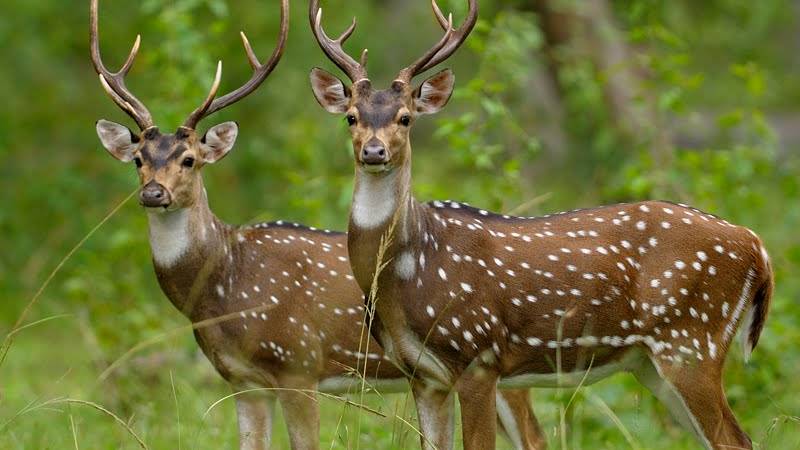
Indian Spotted Deer
Indonesia has several types of deer, such as timor deer (Cervus timorensis), bawean (Axis kuhli), and menjangan. However, the type of deer with white spots that are commonly found wandering around the Bogor Palace, and even become the identity of Bogor city is actually not a native habitat of Indonesia, but originating from India.
Brought From India
The white spotted deer is quite prominent when compared to other types of deer considering the spots on the body that they have. The Latin name of this graceful animal is the Axis axis, a fauna native to India and Sri Lanka.
This Indian spotted deer was first introduced to Indonesia in 1814 by Sir Thomas Stanford Raffles, who at the time served as Governor General of England. The deer occupy the Bogor Palace which was later bred and there is still a big herd living there to this day. It is estimated that the number is around 880, and their age is between 20-30 years.
This amount is considered too much, since the size of the Bogor Palace should only accommodate half of it. Many of them were then moved to zoos and other conservation centers.
The spotted deer habitat is in the area of open grasslands, they like abundant grass food sources and such locations also benefit them to stay alerted when there are approaching predators.
Physical And Behavioral Characteristics
In addition to the white spots on the body, the Indian spotted deer also have physical characteristics which range from 90 to 100 cm in height, with the weight for males is 50 to 75 kg, can also be bigger than that, while for females around 30-50 kg.
The male deer can be recognized immediately with a distinctive branching horn, with a height of up to 75 cm that rises above the head.
As herbivorous animals, their favorite foods are grass and leaves. Females have a gestational age of 234 days, after which they can get pregnant again after 275 days. Young deer will experience puberty at the age of 10-15 months for females, and 12-16 months for males.
They like to live in a group, and usually these herds are dominated by mothers and children. They are generally more active during the day, although they can also be active at night if they smell a threat. The males are aggressive when it comes to defending territory, while female deer will be aggressive when they have to protect their children. But since females have no horns, they fight against enemy using kicks and bites.
Its wide ears function to cool off the body, when they flap their ears the air flow will be created, and the inside of the ear will be exposed with many blood vessels that help eliminate body heat.
Bali Safari Park keep this dear as part of our conservation mission. You may this on your safari journey where you can see this deer from your glasses bus with the story from our ranger.
Nature And Behavior
African elephants like to live in groups with females dominating herds. In the herd, most of the time only consisted of mothers and their children, while male elephants stay away from the group even though they do not go too far because they still have the responsibility of guarding their offspring from danger.
But because these animals are matrilineal, usually the leader of the herd is the oldest female who has much experience in how to live, survive and thrive in the hard terrain of Africa. These tough females bravely lead their herds to distant water and food sources and teach children how to protect themselves.
Threats And Conservation
As an exotic majestic animal, African elephants are threatened by poachers who brutally kill these beautiful creatures for their ivory. The ivory market does promise big profits, especially because of the high demand in Asia.
To protect African elephants, much has been done starting from the law that provides severe punishment for poachers, monitors the movement of elephants in the wild, and also campaigns so that buyers or fans of elephant ivory stop buying ivory for the preservation of African elephants. However, sadly that illegal hunting and ivory trading still continue to this day.
